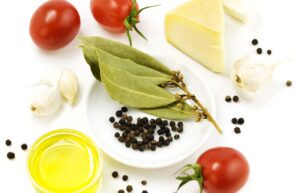+86 571 8659 2517
+86 180 5841 8258
info@zmuni.com

Recently, the World Health Organization’s International Agency for Research on Cancer (IARC) classified talcum powder as a "Group 2A carcinogen," meaning it is “probably” causes cancer. In response to IARC's assessment, ZMUni Compliance Centre has compiled information on compliance requirements for talc in China and Western countries, helping businesses and consumers better understand this ingredient. | IARC Classified as the Second Highest Level of Certainty After evaluating the evidence, the IARC has classified talc as Group 2A, indicating a probable carcinogen with the second-highest level of certainty. However, talc containing asbestos remains classified as Group 1, which represents the highest

In China, a new food ingredient refers to any food ingredient or substance that has not been previously used or approved for use in food products within the country. To ensure safety and compliance, new food ingredients must undergo a rigorous evaluation and approval process before they can be used in food products. ZMUni Compliance Center has compiled an overview of the acceptance and approval of new food ingredients in China for the first half of 2024 for your reference. | Approved Ingredients As of June 30, 2024, China NHC has issued one announcement (No. 2 of 2024)

Under China's Cosmetics Supervision and Administration Regulations (CSAR) released in 2020, companies must apply for registration and filing for cosmetic ingredients that are not listed in the Inventory of Existing Cosmetic Ingredients in China (IECIC 2021). Adjustments to the usage purpose or safe usage amount of existing cosmetic ingredients also require registration or filing. New cosmetic ingredients (NCIs) refer to natural or synthetic ingredients used for the first time in cosmetics within China. China mandates registration for NCIs with preservatives, sunscreen, coloring, hair dyeing, and skin-whitening functions, while other NCIs only require filing. Since implementing the Administrative Measures on

On July 8, 2024, China's National Medical Products Administration (NMPA) announced the full implementation of electronic submission for cosmetics (including toothpaste) and new cosmetic ingredient (NCI) registration and filing materials. This measure will be officially implemented starting September 1, 2024, with a transition period provided to ensure it does not disrupt companies currently applying for registration and filing. The electronic submission requirements will improve the cosmetics and NCI registration and filing process. Companies will no longer need to mail paper documents, as the process can be handled electronically. This change will reduce the effort companies must exert and lower

On July 8, 2024, the China National Institute for Food and Drug Control (NIFDC) released four technical guidelines aimed at enhancing cosmetic safety assessments. These guidelines include: 1. Technical Guidelines for Cosmetic Stability Assessment 2. Technical Guidelines for Preservative Effectiveness Testing of Cosmetics 3. Technical Guidelines for Compatibility Assessment of Cosmetic Packaging Materials 4. Technical Guidelines for Application of Skin Sensitization Integrated Testing and Assessment Strategies In conjunction with these guidelines, the NIFDC also released four corresponding Q&A documents to provide further clarity. The goal of these publications is to guide the industry in improving its cosmetic safety assessment

China Food Regulatory Updates On June 7, 2024, China's State Administration for Market Regulation (SAMR) issued the Work Specifications for the List of Non-Edible Substances That May Be Added to Food, aiming to ensure the necessity, scientific validity, and feasibility of the list of non-edible substances allowed for food additives by: a) establishing an expert committee; b) regulating the procedures for collecting and reviewing suggestions on additions or revisions to the list. This is intended to standardize food safety management. On June 14, 2024, the National Center for Food Safety Risk Assessment (CFSA) issued a public consultation on the new food ingredient

China Cosmetic Regulatory Updates | New Cosmetics Ingredients In June 2024, 9 new cosmetic ingredients were filed with the China National Medical Products Administration (NMPA). They include: Ingredient Name in CN & EN Filing No. Filer in CN 3羟基丁酸甘油酯 (Glyceryl Hydroxybutyrate) 20240038 浙江华睿 二氢槲皮素 (Dihydroquercetin) 20240039 广东芭薇 金耳(NAEMATELIA AURANTIALBA)子实体提取物 20240040 广州嘉创 补骨脂酚 (Bakuchiol) 20240041 维琪科技 羟基四氢甲基嘧啶羧酸 (Hydroxyectoin) 20240042 浙江华睿 环四肽-24氨基环己烷甲酸酯 (Cyclotetrapeptide-24 aminocyclohexane carboxylate) 20240043 维琪科技 总状绿绒蒿(MECONOPSIS RACEMOSA)提取物 20240044 贝泰妮 维生素K2 (MENAQUINONE-7) 20240045 双骏生物 岩藻糖基乳糖 (FUCOSYLLACTOSE) 20240046 一兮生物 The technical requirements for the 9 new cosmetic ingredients mentioned above have not been disclosed, and they have not yet entered the

On June 27, 2024, the China National Health Commission (NHC) issued a solicitation letter seeking public opinions on 14 national food safety standards. These include four product standards, five food additive standards, three operation and hygiene criteria, one testing standard, and notably, the GB 7718 General Standard for the Labeling of Prepackaged Foods. Comments are welcomed until August 26, 2024. On June 28, 2024, the China State Administration for Market Supervision (SAMR) released the consultation on the Administrative Measures for Supervision of Food Labeling (Draft), aiming to regulate the labeling practices of food producers and operators, enhance the supervision
+86 571 8659 2517
+86 180 5841 8258
info@zmuni.com